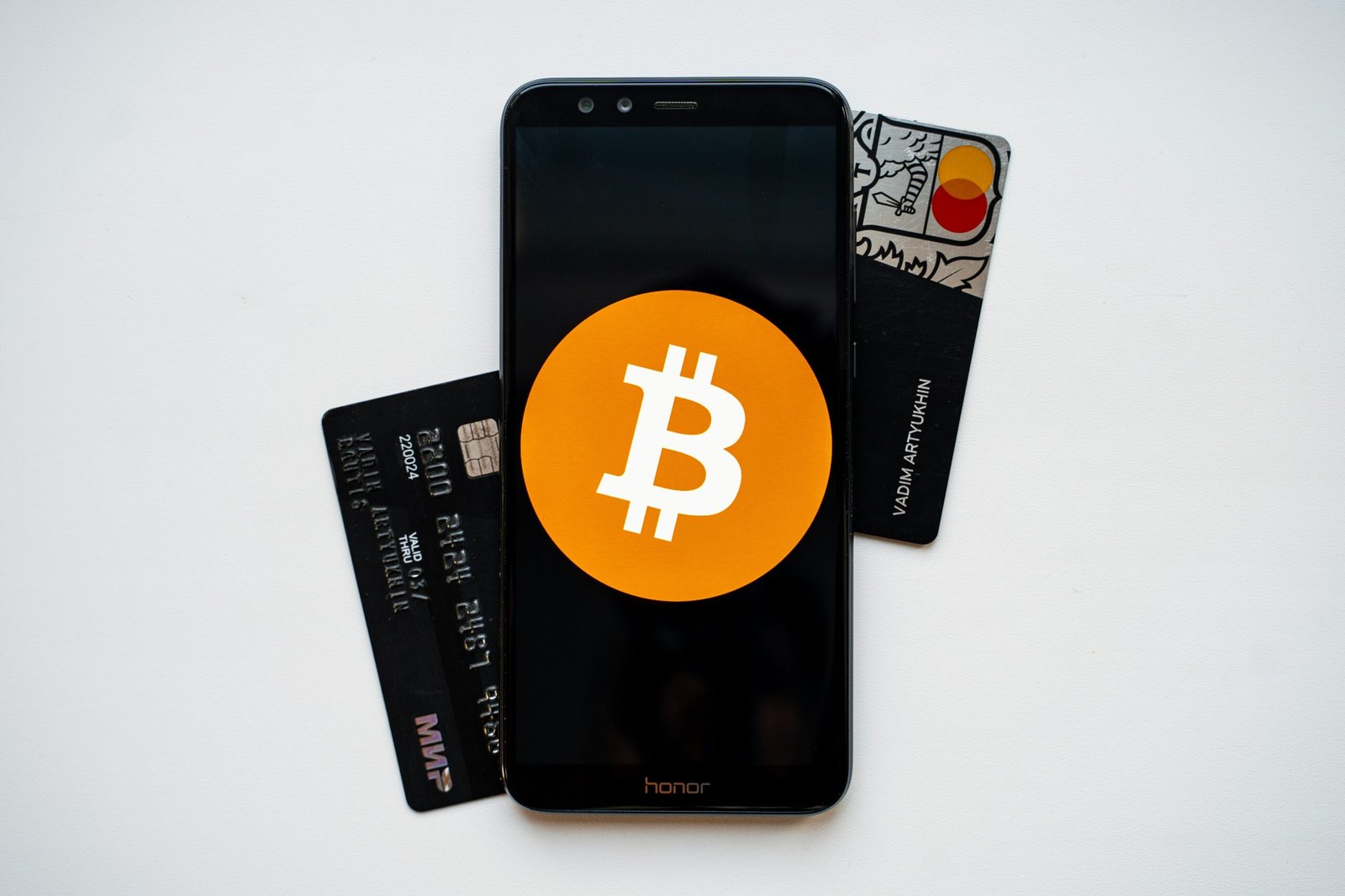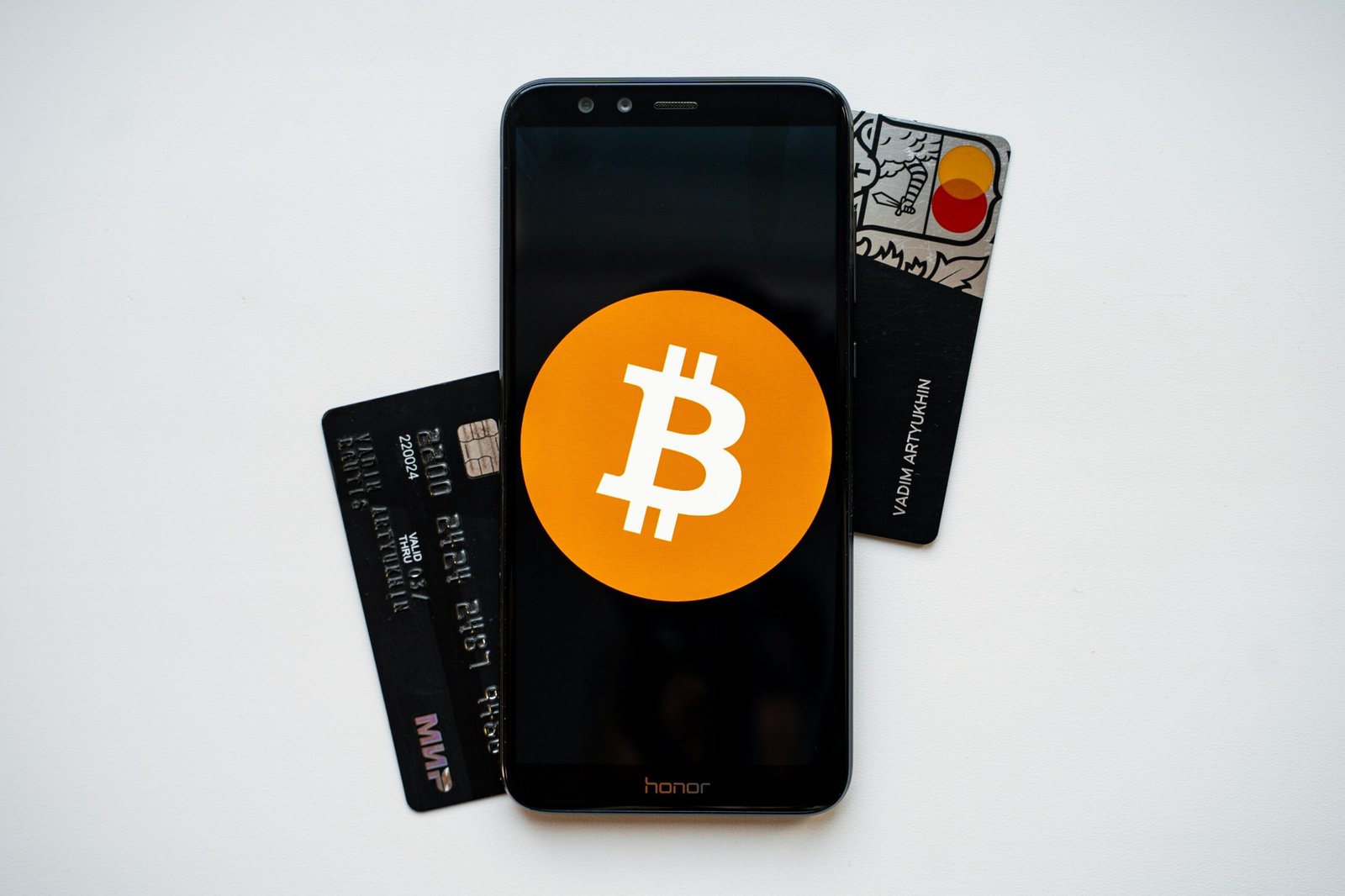Introduction to Crypto Wallets
Crypto wallets are essential tools for anyone engaging in the world of cryptocurrencies. These wallets serve as digital safes where users can store, manage, and transact their digital assets securely. Unlike traditional wallets that hold physical money, crypto wallets store cryptographic keys—pairs of public and private keys—that facilitate access to your digital funds and enable transactions on blockchain networks.
The importance of crypto wallets in the cryptocurrency ecosystem cannot be overstated. As the popularity of digital currencies like Bitcoin, Ethereum, and numerous altcoins continues to grow, safeguarding these assets has become critically important. Crypto wallets offer a secure means to protect your digital investments from potential threats such as hacking, fraud, and theft. By using a reliable crypto wallet, you not only ensure the safety of your assets but also gain the ability to manage them efficiently.
Crypto wallets can be broadly categorized into two types: hot wallets and cold wallets. Hot wallets are connected to the internet and are typically used for frequent transactions. They offer convenience and ease of access, making them ideal for active traders and users who require quick, regular transactions. Examples of hot wallets include mobile wallets, desktop wallets, and web wallets.
On the other hand, cold wallets are offline storage solutions that provide enhanced security for your digital assets. These wallets are not connected to the internet, thus minimizing the risk of cyber-attacks. Cold wallets are suitable for long-term storage of cryptocurrencies and are often used by individuals who prioritize security over convenience. Common types of cold wallets include hardware wallets and paper wallets.
Understanding the different types of crypto wallets and their functionalities is the first step in safeguarding your digital assets. As we delve deeper into this guide, we will explore various features, benefits, and best practices for using crypto wallets effectively.
Types of Crypto Wallets: Hot vs. Cold
Crypto wallets are essential tools for managing and safeguarding digital assets. They fall into two primary categories: hot wallets and cold wallets. Each type offers distinct features and benefits, catering to different user needs and security preferences.
Hot Wallets
Hot wallets are digital wallets connected to the internet. They are typically software-based and can be accessed via computers, smartphones, or web browsers. Examples of hot wallets include mobile wallets like Trust Wallet and web wallets such as MetaMask. These wallets are widely used for their convenience and ease of access, making them ideal for daily transactions and frequent trading.
The primary advantage of hot wallets lies in their accessibility. Users can quickly access their cryptocurrencies for trading, shopping, or transferring funds. However, this convenience comes with a trade-off in security. Since hot wallets are connected to the internet, they are more susceptible to hacking attempts, phishing attacks, and malware. Therefore, it is crucial for users to implement robust security measures, such as two-factor authentication and strong passwords, to mitigate these risks.
Cold Wallets
In contrast, cold wallets are offline storage solutions that provide enhanced security for digital assets. These wallets are not connected to the internet, making them less vulnerable to cyber threats. Examples of cold wallets include hardware wallets like Ledger Nano S and Trezor, as well as paper wallets that store private keys on a physical piece of paper.
The main advantage of cold wallets is their superior security. By keeping private keys offline, cold wallets significantly reduce the risk of unauthorized access and hacking. This makes them an excellent choice for long-term storage of cryptocurrencies and large holdings. However, the downside is that cold wallets can be less convenient for frequent transactions. Users need to connect their hardware wallets to a computer or manually input private keys from a paper wallet to access their funds.
In summary, both hot and cold wallets have their unique advantages and limitations. Hot wallets are suitable for users who require quick and easy access to their cryptocurrencies, while cold wallets offer robust security for long-term storage. Understanding these differences helps users make informed decisions about how to best protect and manage their digital assets.
How Crypto Wallets Work
Understanding the mechanics of crypto wallets is crucial for anyone venturing into the realm of digital assets. At their core, crypto wallets function through the interplay of public and private keys, wallet addresses, and the blockchain. These elements work together to ensure secure and verifiable transactions.
Each crypto wallet is associated with a pair of cryptographic keys: a public key and a private key. The public key is akin to an email address; it can be shared openly and is used to generate wallet addresses. A wallet address is a hashed version of the public key, serving as the destination for receiving cryptocurrencies. On the other hand, the private key is a confidential piece of data that grants the owner access to their digital assets. It is imperative to keep the private key secure, as anyone possessing it can control the funds in the wallet.
When a transaction is initiated, the wallet software uses the private key to sign the transaction, providing proof that the transaction was authorized by the wallet owner. This signed transaction is then broadcasted to the blockchain network. The network nodes validate the transaction, ensuring the sender has sufficient funds and that the transaction adheres to the blockchain’s consensus rules. Once validated, the transaction is recorded on the blockchain, a decentralized ledger that maintains a tamper-proof history of all transactions.
The blockchain’s role is pivotal in the security and transparency of crypto transactions. By maintaining a distributed ledger, the blockchain ensures that no single entity has control over the transaction history, reducing the risk of fraud and double-spending. This decentralized verification process is what underpins the trustworthiness of cryptocurrencies.
In summary, crypto wallets operate through a sophisticated yet elegant system of keys and addresses, with the blockchain providing the secure and immutable record of transactions. Grasping these fundamental concepts is essential for safeguarding your digital assets and making informed decisions in the crypto space.
Choosing the Right Crypto Wallet
Choosing the appropriate crypto wallet is a critical decision that hinges on individual needs and preferences. The primary factors to consider include security, ease of use, supported cryptocurrencies, and additional features such as multi-signature support and hardware integration. Understanding these aspects will ensure that you select a wallet that aligns with your requirements and offers robust protection for your digital assets.
Security: The foremost consideration when selecting a crypto wallet is its security features. Wallets can be broadly categorized into hot wallets, which are connected to the internet, and cold wallets, which are offline. While hot wallets offer greater convenience for frequent transactions, cold wallets provide enhanced security against cyber threats. Look for wallets that offer strong encryption, two-factor authentication, and backup options to safeguard your private keys.
Ease of Use: The usability of a wallet is another crucial factor. A user-friendly interface can significantly simplify the management of your cryptocurrencies. Whether you are a novice or an experienced user, the wallet should offer a seamless experience in sending, receiving, and monitoring your digital assets. Mobile wallets, for instance, provide on-the-go access, while desktop wallets might offer more comprehensive features.
Supported Cryptocurrencies: Ensure that the wallet supports the specific cryptocurrencies you intend to hold. Some wallets are designed to support a wide range of cryptocurrencies, while others are limited to major ones like Bitcoin and Ethereum. If you plan to diversify your portfolio, a multi-currency wallet can be a more convenient option.
Additional Features: Evaluate the additional features that a wallet offers. Multi-signature support is an important feature that enhances security by requiring multiple approvals for transactions. Hardware integration is another significant feature that provides an extra layer of security by storing your private keys on a physical device, separate from your computer or mobile phone.
To help you make an informed decision, consider the following checklist:
- Evaluate the security features and opt for wallets with strong encryption and two-factor authentication.
- Choose a wallet with a user-friendly interface that matches your experience level.
- Confirm the wallet supports all the cryptocurrencies you plan to hold.
- Look for additional features like multi-signature support and hardware integration.
By carefully assessing these factors, you can select a crypto wallet that not only suits your needs but also provides the necessary security for your digital assets.
Setting Up Your Crypto Wallet
Setting up a crypto wallet is a critical step in protecting your digital assets. Whether you choose a software, hardware, or mobile wallet, each type requires specific actions to ensure security and usability. Below, we provide a comprehensive guide for setting up different types of crypto wallets, along with best practices for ensuring your assets remain secure.
Software Wallets
Software wallets are applications you can download and install on your computer or mobile device. To set up a software wallet:
1. Choose a reputable wallet provider and download the application from the official website.
2. Install the application and open it. You will be prompted to create a new wallet.
3. Follow the on-screen instructions to create a secure password. This password will be required every time you access your wallet.
4. The application will generate a seed phrase, which is a series of 12-24 words. Write down this seed phrase and store it in a safe place. This is crucial for recovering your wallet if you lose access.
5. Confirm your seed phrase as prompted by the application to complete the setup.
Hardware Wallets
Hardware wallets are physical devices that store your private keys offline, providing an extra layer of security. To set up a hardware wallet:
1. Purchase a hardware wallet from a trusted manufacturer.
2. Connect the device to your computer via USB and follow the instructions provided by the manufacturer.
3. Initialize the device and set up a secure PIN. This PIN will be required for any transactions.
4. The device will generate a seed phrase. Write this down and store it securely, as it is essential for wallet recovery.
5. Install the relevant software on your computer to manage the wallet and complete the setup.
Mobile Wallets
Mobile wallets offer the convenience of managing your crypto assets on the go. To set up a mobile wallet:
1. Download a mobile wallet app from a reputable provider through your device’s app store.
2. Open the app and select the option to create a new wallet.
3. Set a strong password or enable biometric authentication if supported.
4. The app will generate a seed phrase. Write this down and store it in a safe place.
5. Confirm the seed phrase within the app to finalize the setup.
Regardless of the type of wallet you choose, always ensure you back up your seed phrase and use strong, unique passwords. This is fundamental to safeguarding your digital assets and ensuring you can recover your wallet if needed.
Best Practices for Securing Your Crypto Wallet
Securing your crypto wallet is crucial in safeguarding your digital assets from potential threats. By implementing best practices, you can significantly reduce the risk of unauthorized access to your cryptocurrencies. Here are essential measures every crypto wallet user should adopt:
Firstly, ensure that your wallet software is always up-to-date. Developers continuously release updates that fix vulnerabilities and enhance security features. Regularly updating your wallet software helps protect against new security threats and exploits.
Secondly, enable two-factor authentication (2FA) wherever possible. 2FA adds an extra layer of security by requiring a second form of verification, such as a text message or authentication app, in addition to your password. This makes it considerably more challenging for attackers to gain access to your wallet.
Securing your private keys is another critical aspect. Private keys are the gateway to your crypto holdings, and if they fall into the wrong hands, you could lose access to your assets. Use hardware wallets or other secure storage methods to keep your private keys safe. Avoid storing them on your computer or online where they can be susceptible to hacking.
Be vigilant against phishing attacks. Cybercriminals often use phishing tactics to trick users into revealing sensitive information. Always verify the authenticity of emails, messages, and websites that request your wallet credentials. Look for signs of phishing, such as misspelled URLs or unsolicited requests for personal information.
Additionally, consider using a multi-signature wallet. Multi-signature wallets require multiple private keys to authorize a transaction, adding another layer of security. This means that even if one key is compromised, unauthorized transactions are still prevented without the additional keys.
Lastly, regularly back up your wallet. In case of hardware failure or loss of your device, a backup ensures you can still recover your funds. Store the backup in a secure, offline location to protect it from unauthorized access.
By following these best practices, you can enhance the security of your crypto wallet and protect your digital assets from potential threats. Remember, vigilance and proactive measures are key to maintaining the integrity of your cryptocurrency holdings.
Recovering Access to Your Crypto Wallet
Recovering access to a crypto wallet can be a daunting task, especially if you have lost your password or if your account has been compromised. However, modern crypto wallets come with robust security features designed to help you regain access. One of the most fundamental tools for this purpose is the seed phrase, also known as a recovery phrase. This is typically a set of 12 to 24 randomly generated words provided when you first set up your wallet. It is crucial to store this phrase securely, as it allows you to recover your wallet and its contents if you forget your password or lose access to your device.
In addition to the seed phrase, many wallets use recovery keys or backup files. These are often encrypted and can be stored digitally or physically. When using these methods, ensure that they are stored in a secure location, such as a safe deposit box, and are not easily accessible to unauthorized individuals. Some wallets also offer two-factor authentication (2FA) to add an extra layer of security. While 2FA can significantly reduce the risk of unauthorized access, it is vital to keep your 2FA codes and backup methods well-protected.
If your wallet has been hacked, immediate action is necessary. First, disconnect your device from the internet to prevent further unauthorized transactions. Next, contact your wallet provider’s customer support for assistance. They may be able to help you secure your account and recover lost assets. It is also advisable to move any remaining funds to a new wallet with updated security measures. Long-term strategies for safeguarding your crypto wallet include regularly updating your passwords, using hardware wallets for storing large amounts of cryptocurrency, and staying informed about the latest security threats and updates in the crypto space.
By understanding and utilizing these recovery methods and security practices, you can significantly enhance the safety of your digital assets. Remember, the security of your crypto wallet largely depends on your vigilance and proactive measures.
Future Trends in Crypto Wallets
The realm of crypto wallets is continually evolving, driven by technological advancements and the growing adoption of digital assets. One notable trend is the integration of decentralized finance (DeFi) features. DeFi protocols allow users to lend, borrow, and trade cryptocurrencies without relying on traditional financial institutions. As a result, future crypto wallets are expected to include seamless DeFi integration, enabling users to access a variety of financial services directly within their wallets. This evolution not only enhances functionality but also promotes financial inclusivity by providing decentralized financial services to a broader audience.
Multi-currency support is another emerging trend. With the proliferation of various cryptocurrencies, users demand wallets that can manage multiple digital assets efficiently. Future crypto wallets are anticipated to support a wide range of cryptocurrencies, providing users with the convenience of managing all their digital assets in one place. This trend will likely be coupled with advanced features such as automatic currency conversion and real-time asset tracking, further enhancing the user experience.
User experience (UX) and security remain at the forefront of crypto wallet development. Innovations in biometric authentication, such as fingerprint and facial recognition, are set to become standard features in future wallets, providing an additional layer of security. Moreover, advancements in user interface design aim to simplify the wallet setup and transaction processes, making crypto wallets more accessible to both novice and experienced users. Enhanced UX combined with robust security measures will contribute significantly to the mainstream adoption of crypto wallets.
Looking ahead, the future of crypto wallet technology appears promising. As developers continue to innovate, users can expect more intuitive, secure, and versatile wallets that cater to the diverse needs of the growing cryptocurrency community. The integration of cutting-edge technologies and thoughtful design improvements will undoubtedly shape the future landscape of digital asset management.


